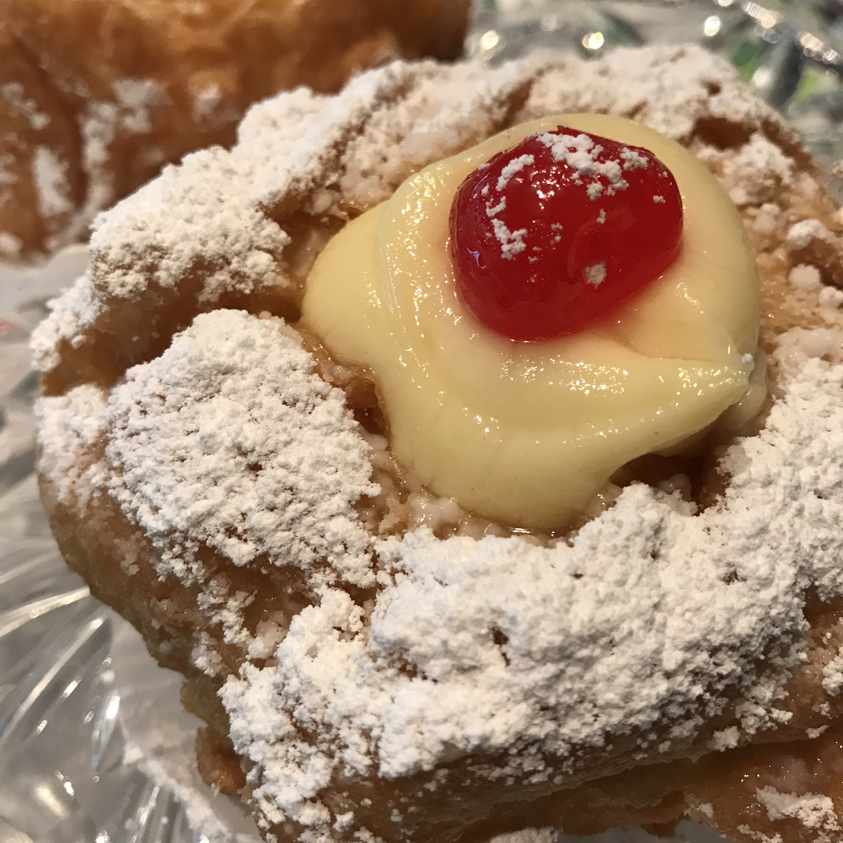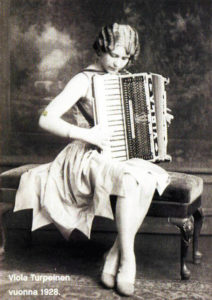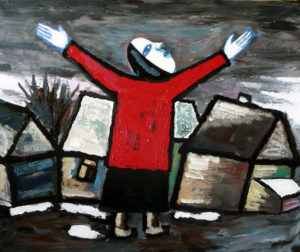
The Finns have had their St. Urho’s Day and the Irish their St. Patrick’s Day, and now it’s the Italians’ turn, for it is St. Joseph’s Day––the Festa of San Giuseppe. In a land where so many of the vast multitude of saints are held dear and daily called upon and spoken to like members of the family, Joseph is one of the most beloved. Joseph, foster father to Gesù Bambino. In Italy, it is Father’s Day.
Those who are devoted to San Giuseppe may build an altar in their homes. Grandma Cutrone would do this. The parish priest would come to her home and bless the altar. Beneath the statue of St. Joseph, baskets of oranges. On the feast day, today, friends and neighbors would stop by and bring gifts to the altar and when they left, Grandma would send them home with an orange and a box of animal crackers.
What is central to our celebration, though, are Zeppole. They make their appearance in Italian bakeries at this time of year, especially today. In the more popular bakeries, you might find rolling racks full of trays of them behind the counter; they’ll be making so many of them, they won’t possibly fit them all inside the display case.
Zeppole are pastries of fried or baked dough, generous in size, each typically something you could fit into two open hands. They are filled with custard and often include a few cherries on top. There are also sfinci, related to zeppole, but filled with sweetened ricotta cream, perhaps with a few small chocolate chips, very much like a cannoli filling. Variations of these sweets, in name and in shape and ingredients, exist throughout Italy for the feast of San Giuseppe, but it is in the South, from where my family hails, that they are best known. Both sfinci and zeppole are pastries with histories that go back many centuries, with names that come out of the Arabic influence on the region. How far back do they go? The ancient Romans made fried pastries each year on the 17th of March in honor of Bacchus, and it is thought that the zeppole and sfinci we make today are direct descendants of those long ago sweets of springtime.
This St. Joseph’s Day, Lent has barely just begun. Usually, when Lent begins in February, it is St. Joseph’s Day that provides a day to step away from weeks of the season’s otherwise somber restraint to enjoy rich and festive pastries. If you’ve given up sweets for Lent, it can be a tough choice, whether to celebrate St. Joseph’s Day with zeppole or not. But, my friends, it is but one day a year, and for my people, these pastries are perhaps the highlight of the entire month of March. If you celebrate––and you know I hope you do––do so knowing you have an entire nation behind you.

